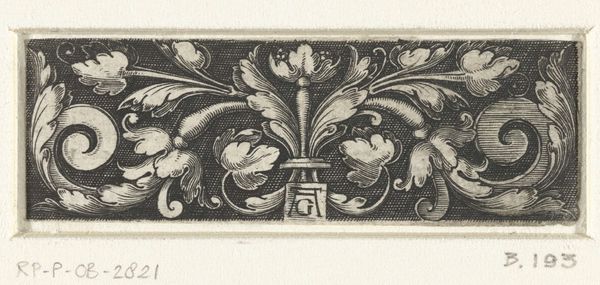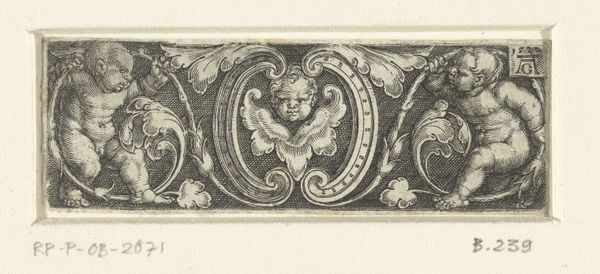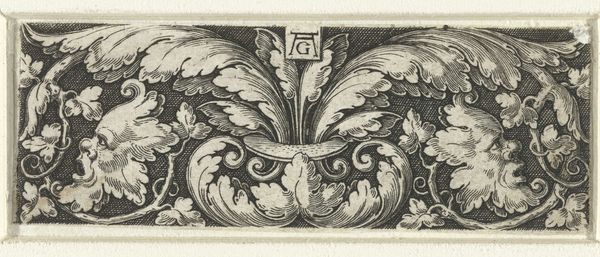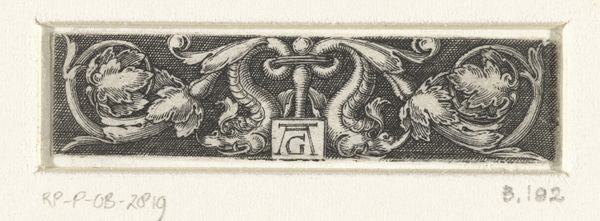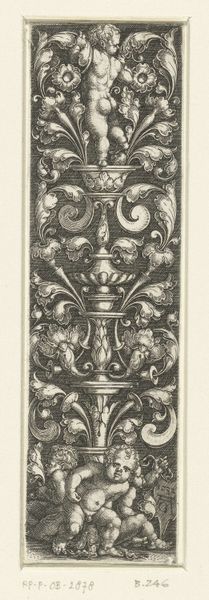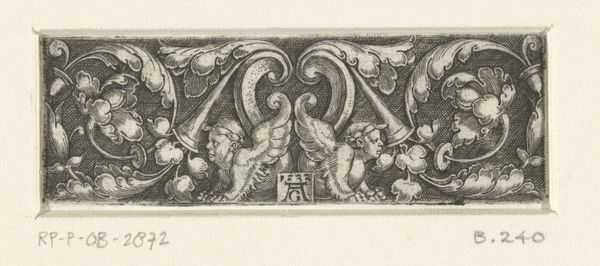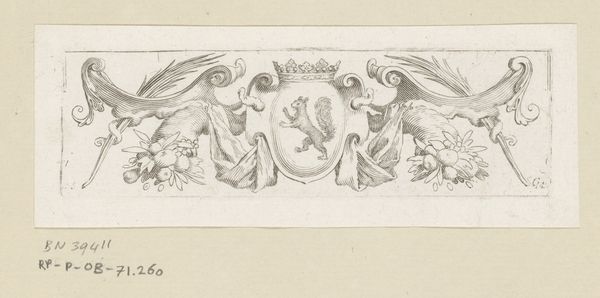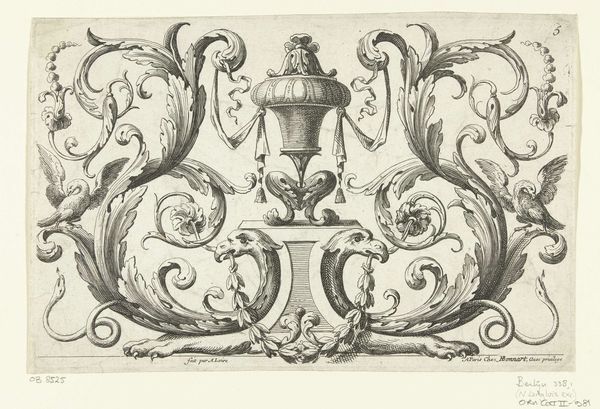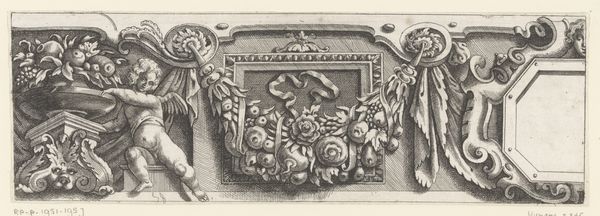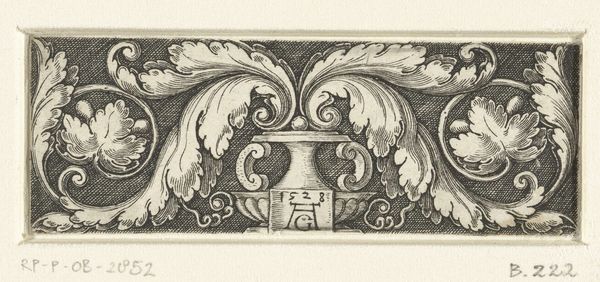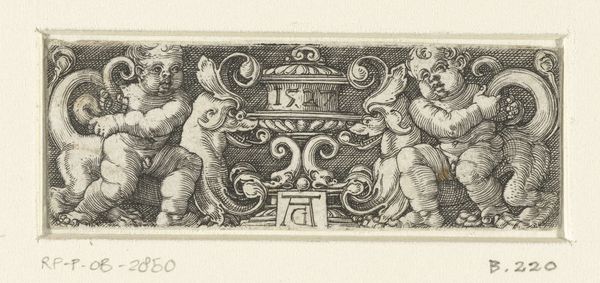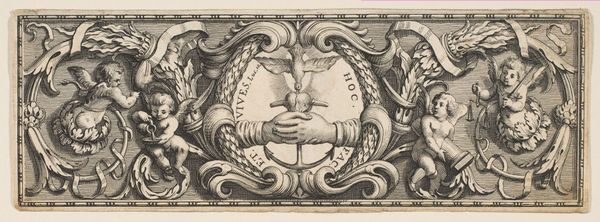
print, engraving
#
allegory
# print
#
figuration
#
11_renaissance
#
northern-renaissance
#
decorative-art
#
engraving
Dimensions: height 28 mm, width 78 mm
Copyright: Rijks Museum: Open Domain
This is an ornamental frieze made in 1529 by the German artist Heinrich Aldegrever. It depicts two putti or cherubic boys, flanking a shield that bears the date and the artist’s initials. During the Northern Renaissance, artists like Aldegrever were navigating a complex web of religious reform, social upheaval, and emerging humanism. Here, the putti, figures inherited from classical art, are reimagined through a northern lens. These aren’t simply decorative elements; they embody a negotiation between classical ideals and the realities of the Reformation. The shield and the artist's initials suggests a kind of personal or artistic heraldry. The inclusion of these Renaissance motifs acted as symbols of status and identity during a period of great change. Aldegrever’s print invites us to consider how artists synthesized diverse cultural influences, and how they navigated their own identities within these historical currents. It's a small window into a world in transition.
Comments
No comments
Be the first to comment and join the conversation on the ultimate creative platform.
